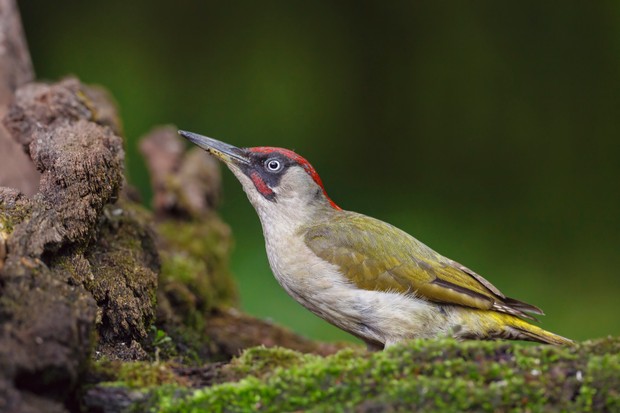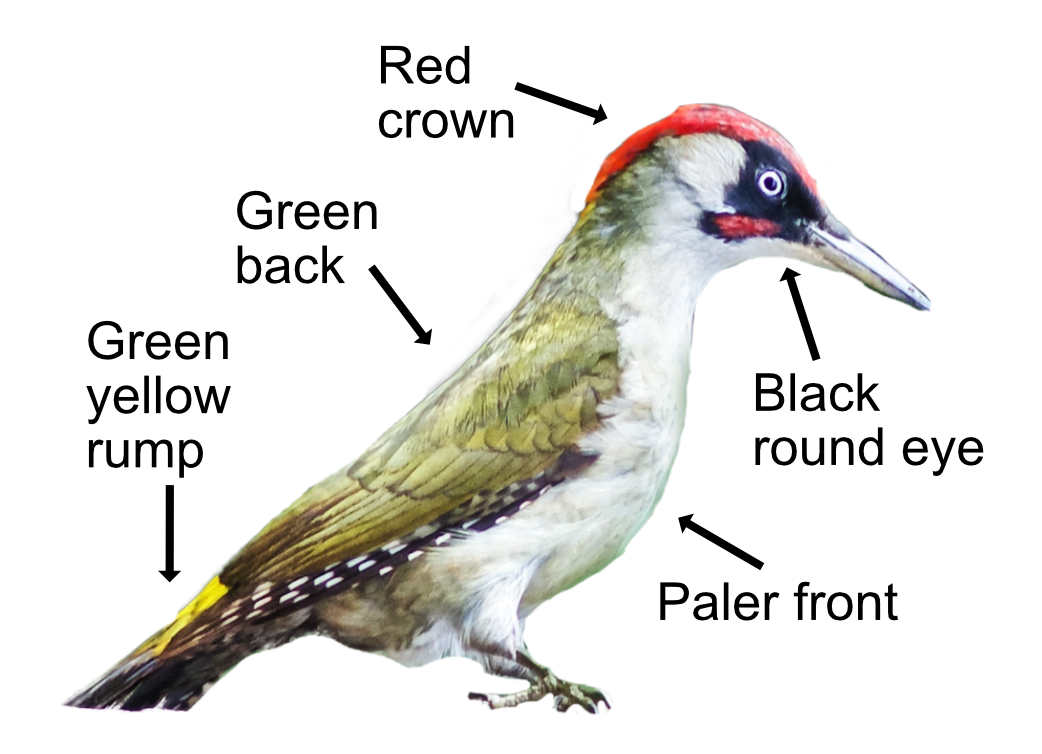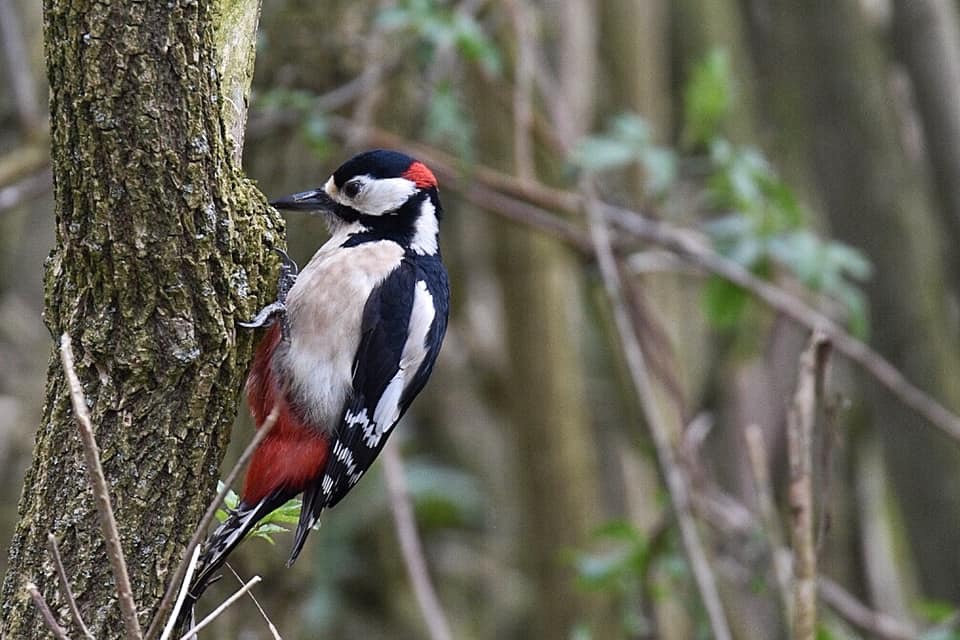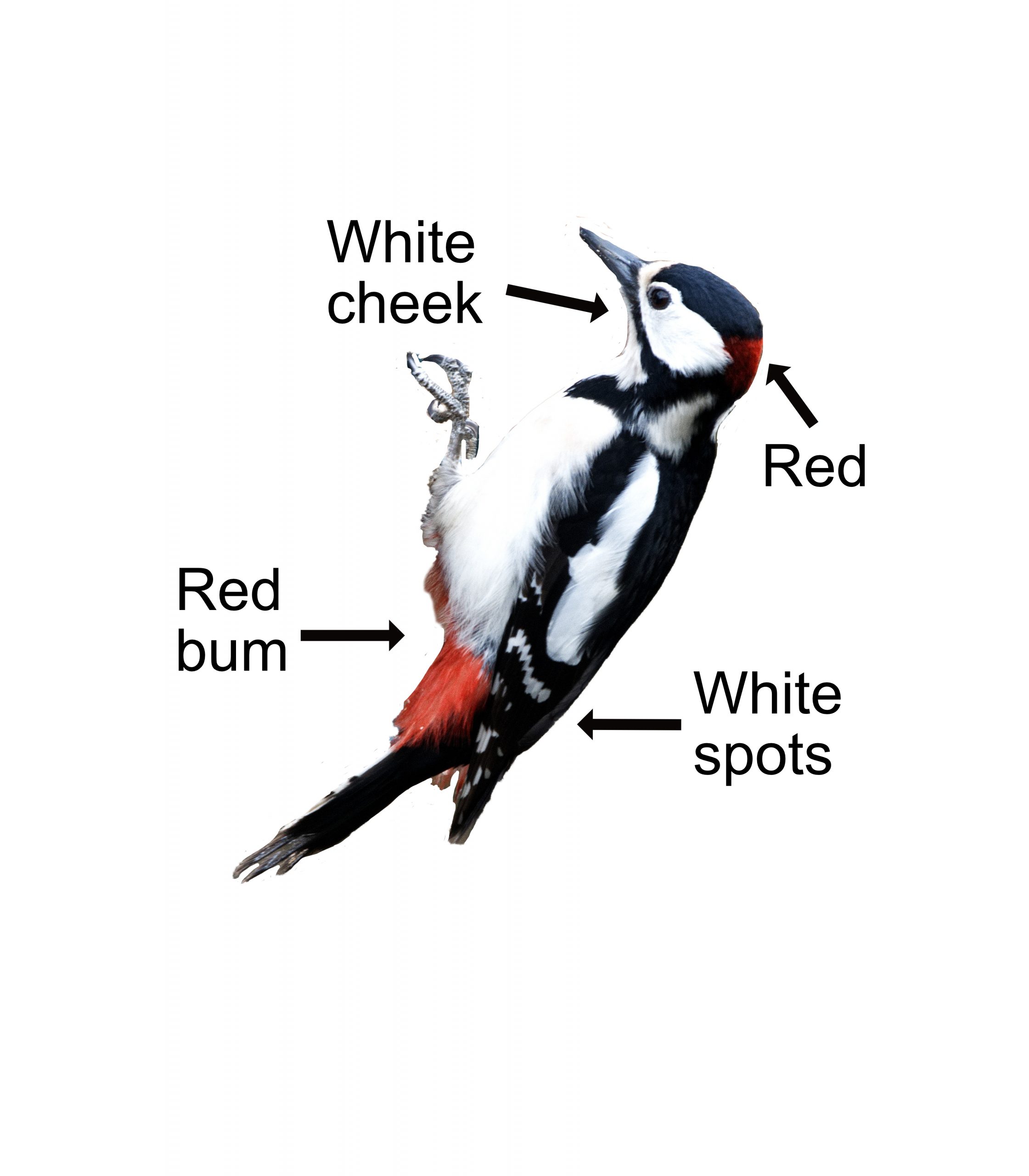
If you hear the laughing 'yaffle' of a Green Woodpecker, you are too late. It has already flown off like a green torpedo. The place to look for them is hopping about on the ground at the edge of trees as they feed on the ground and don't actually peck wood much except when making their nest holes.
The Green Woodpecker is the size of a pigeon and is the largest of the British Woodpeckers. It has a dark green back, paler green underparts with a bright yellow-green rump. On their head they have a bright red crown, a black moustache, and black round the eyes. They climb trees in a series of jerks using their stiff tail feathers against the trunk for support - but you will be lucky seeing them as they are superb at making sure the tree is between you and them. Their call is a laughing "kyoo kyoo kyoo", as they taunt you to find them. You would think a bird with a bright red head would be easy to see, but their green coats blend in well with the ground and they can look like a distant red flower. They have a comical flight, closing their wings after 3 or 4 flaps to look like a tubby green undulating torpedo.

The Green Woodpecker is an ant eating specialist and has a very long sticky tongue (good for blowing raspberries) to extract ants and their eggs from the nest chambers below the ground. They will eat other insects, but ants are their favourites, giving them a distinctive poo that looks like ash from a cigarette and contains the remains of hundreds of ant bodies.
Although Green Woodpeckers can pair for life, they are antisocial outside the breeding season and spend most of the year living alone doing standup comedy. The two halves of a pair may roost near to each other during the winter, but they won't re-establish their pair bond until March. This is achieved through the use of loud calls, and a period of courtship. The 5-6 eggs are laid between March and June in a nest hole within a suitable tree trunk such as oak, ash or birch. Both parents incubate the eggs, which hatch after 17 days. The youngsters are then fed by mum and dad and can fly 23 days later. The youngsters carry on being fed by their parents for a further 7 weeks before finally becoming fully independent.
There are 50,000 pairs in Britain and not a single one in Ireland (as there are enough comedians over there already). They live in woodland, small copses, orchards, farmland and parks, and don't move far from where they were born. Preservation of old mature woods and meadows is extremely important for their survival.
Their Latin name is 'picus viridis' where 'picus' is Latin for 'woodpecker' and 'viridis' means 'green'.

